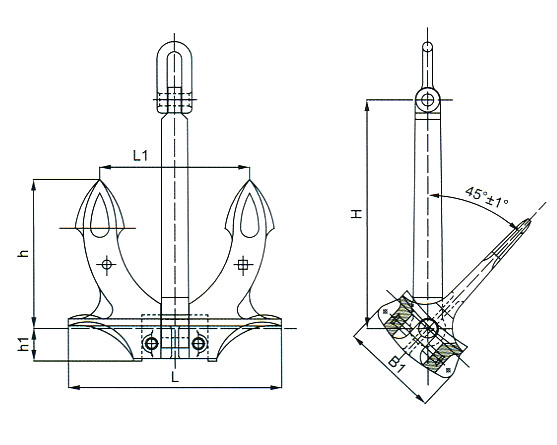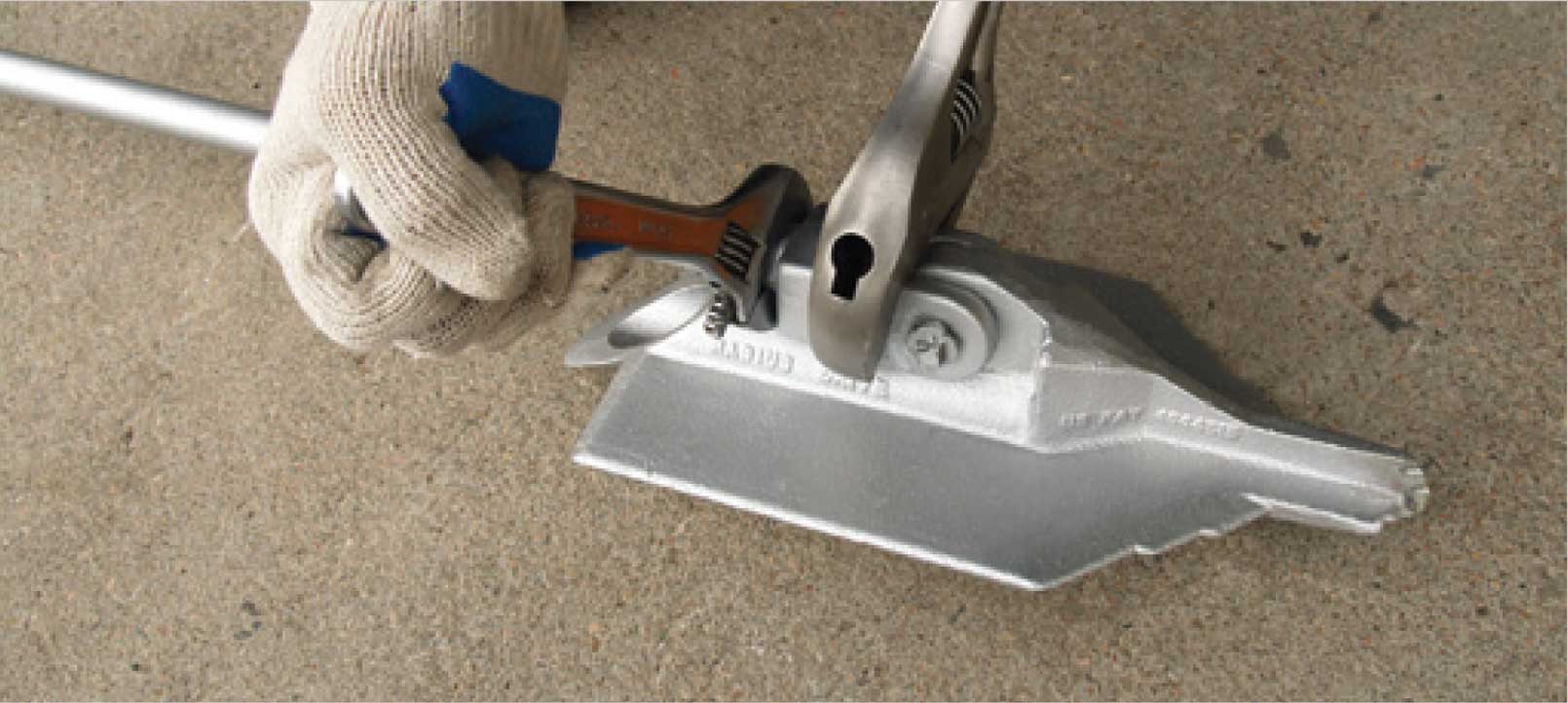Installing Earth Anchor: Ideal Practices and Tips for Success
Installing Earth Anchor: Ideal Practices and Tips for Success
Blog Article
Effective Support Systems Designed for Maximum Toughness
The layout of reliable anchor systems is vital in guaranteeing maximum toughness and dependability across various applications, specifically in civil and marine design. As we check out the different kinds of anchor systems and the products that underpin their efficiency, it becomes evident that the future of securing technology might hold even greater innovations.
Value of Anchor Equipments
Anchor systems play an important role in different applications, from aquatic construction to overseas exploration and even in the stability of frameworks on land. In aquatic environments, anchors are necessary for mooring vessels, preventing drift due to wind, currents, or waves.
In addition to aquatic applications, support systems are essential in civil engineering, particularly in the building of preserving walls, bridges, and structures in geologically tough areas. These systems assist disperse lots effectively, counteracting forces such as soil pressure and seismic activity. The value of support systems expands to the renewable resource industry, where they safeguard wind generators and overseas systems, adding to the security and performance of power generation.
Ultimately, the efficiency of a support system is essential to the security, resilience, and functionality of different structures, making their style and application an essential part in design and building and construction techniques throughout several markets.
Ingenious Materials in Anchor Design

Modern improvements in materials scientific research have dramatically changed anchor style, enhancing efficiency and sturdiness. The incorporation of high-strength alloys and composite products has actually resulted in supports that can endure severe environmental problems while maintaining architectural integrity. These ingenious materials not just provide premium tensile stamina yet also lower weight, improving simplicity of installment and handling.
One noteworthy growth is the use of carbon fiber strengthened polymers (CFRP), which provide exceptional deterioration resistance and high strength-to-weight ratios. This enables for the layout of anchors that are both light-weight and incredibly resilient, making them appropriate for aquatic applications where direct exposure to saltwater can result in product destruction.
Additionally, developments in layers-- such as advanced epoxy and galvanization-- additional secure steel supports from corrosion, extending their service life. These finishings can be customized to fulfill specific environmental difficulties, making certain that anchors carry out dependably also in extreme problems.
Furthermore, the integration of smart materials, which can adapt to altering lots and ecological variables, is paving the way for future anchor designs. These developments underscore a trend towards greater efficiency and dependability in anchoring solutions, ultimately enhancing safety across various applications.
Types of Efficient Anchor Systems
Efficient anchoring solutions are essential for ensuring stability and safety in various applications, from construction to marine procedures. Numerous kinds of effective support systems stick out for their efficiency and versatility to different atmospheres.
One popular kind is the screw support, which makes use of a helical style to offer exceptional holding power in soil and soft ground. These supports are especially helpful in short-term structures and can be easily gotten rid of and recycled.
One more utilized system is the driven heap anchor, often used in aquatic and hefty building tasks. These anchors are driven deep into the ground, providing outstanding resistance to side forces, making them optimal for sustaining big frameworks.
For marine applications, the mooring buoy anchor browse around this site system is essential. This system consists of buoyant gadgets connected to supports on the seabed, allowing vessels to stay secure while lessening drag from currents and winds.
Finally, the deadweight support system counts on hefty weights to provide security and is commonly utilized in overseas installations. Each sort of support system is developed to satisfy specific demands, making certain the safety and stability of frameworks and vessels in various conditions.
Safety Specifications and Rules
Making certain the safety and dependability of anchoring systems includes adherence to rigorous safety and security standards and regulations. These requirements are established by different companies, consisting of the American Culture for Screening and Products (ASTM), the International Company for Standardization (ISO), and neighborhood building ordinance. Conformity with these laws is critical to guarantee that anchoring systems Look At This can endure environmental tensions and tons, decreasing the danger of failing.
Checking and accreditation processes are essential elements of security standards. Anchoring systems must undergo rigorous assessments, including tensile strength examinations, exhaustion examinations, and ecological impact assessments. These tests assist establish the systems' efficiency under real-world problems, ensuring they fulfill or go beyond the needed security thresholds.
In addition, suppliers are needed to offer detailed specifications and guidelines for setup and maintenance, which are indispensable to maintaining safety criteria. Routine evaluation and upkeep procedures should additionally be developed to identify possible weaknesses over time.
Future Fads in Anchor Modern Technology
The future of anchor technology is positioned for significant innovations, driven by the boosting demand for improved safety and efficiency in construction and design applications. Developments are anticipated in materials, layout, and installation strategies, which will improve the toughness and toughness of anchor systems.
One arising trend is the assimilation of smart innovation right into anchor systems. Earth Anchor. By including sensors, these systems can keep an eye on stress and anxiety, tons, and ecological conditions in real-time, permitting for proactive maintenance and raised reliability. Furthermore, advancements in composite materials may bring about lighter, yet stronger anchors that can stand up to extreme conditions, lowering the overall weight of frameworks


Furthermore, modular anchor systems are gaining grip, permitting less complicated installment and flexibility to numerous task requirements. Earth Anchor. As the market embraces automation, robotic setup methods can even more improve the anchoring procedure, enhancing effectiveness and precision
Final Thought
To conclude, reliable anchor systems play a critical role in making sure the security and safety and security of aquatic and civil design jobs. The incorporation of ingenious materials and progressed layouts dramatically improves holding power and resistance to numerous ecological difficulties. Adherence to safety standards and guidelines further emphasizes the relevance of reliability in anchor systems. As modern technology remains to advance, future trends are anticipated to concentrate on wise monitoring solutions and lasting products, paving the way for improved efficiency and durability.
The style of efficient anchor systems is crucial in ensuring maximum strength and reliability throughout numerous this post applications, particularly in aquatic and civil design. As we explore the various kinds of anchor systems and the materials that underpin their performance, it ends up being evident that the future of securing modern technology may hold also better developments.Guaranteeing the safety and security and integrity of securing systems involves adherence to stringent security criteria and regulations.In conclusion, reliable support systems play a crucial function in guaranteeing the stability and security of aquatic and civil engineering tasks. Adherence to safety standards and policies better highlights the importance of integrity in anchor systems.
Report this page